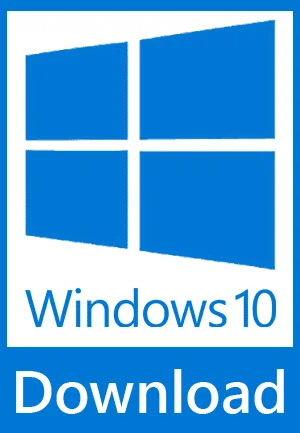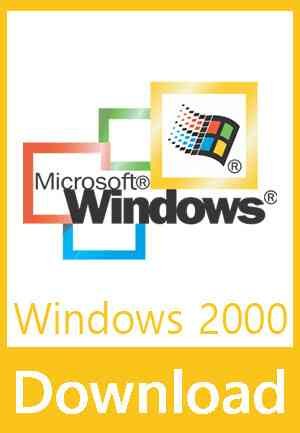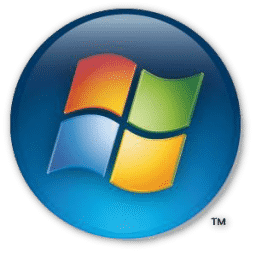Windows 11 ISO (Disk Images)
Windows Vista ISO (Disk Images)
Choose and download your favorite operating system. You can get here Windows 10 ISO (the latest OS), Windows 8 / 8.1 ISO, Windows 7 ISO (pure desktop OS ever!), and Windows XP ISO, including service pack 3 (SP3).
Windowstan keeps visitors happy by providing genuine and original ISO files directly downloaded from Microsoft servers. We have uploaded these ISO files to cloud storage like Mega. Why use Mega or any other service when these files are available on Microsoft servers? Let’s face the reality. Have you ever tried to download Windows 10 ISO or Windows 7 ISO from Microsoft server?
If your answer is yes, then you almost have got the answer. First, Windows ISO is not downloadable straightforwardly. You need to be a geek or at least a tricky person to get Windows ISO direct from Window’s official website. There is more to tell, but leave it for now. The second major reason we have to upload ISO files on cloud servers is the expiration time limit of the Microsoft file server. Once you can generate ISO links, you only have 24 hours to download the ISO files from the Windows server. The link will expire after 24 hours. No matter you have downloaded it successfully or not. But cloud servers have no such limits. That is why we have found this solution favorable for our friends to download ISO files from Microsoft and then host them on a cloud server. It ensures you can always download your favorite OS ISO file and create a USB/DVD for Windows installation anytime.
Microsoft Windows Version History
Microsoft Windows has passed from a series of operating systems to become Windows 10 OS. Here is a brief tour of this journey:
Windows 1.0
Bill Gates announced Microsoft Windows, the world’s best desktop operating system for years, on November 10, 1983.
Microsoft Windows 1.0 was released on November 20, 1985. Its price was $100 at that time. Windows 1.0 was not a complete operating system but an operating environment that was initially named “Interface Manager” as a codename. Rowland Hanson was the marketing head at Microsoft.
Windows 2.0
Microsoft Windows 2.0 was launched on December 9, 1987. Its price was $100 at that time. Windows 2.0 got more popular than Windows 1.0, the earlier version of Windows OS. The introduction of Microsoft Excel and Word played a major role in its popularity. It was able to utilize a maximum of 1 MB of memory.
Microsoft Windows 386 was released on December 9, 1987. It was also known as Windows/386. Its price was $100.
Microsoft Windows 286 was released in June 1988. It was also known as Windows/286. Its price was $100.
Windows 3.0
Microsoft Windows 3.0 was introduced on May 22, 1990. This version had 2 price tags; the new Windows 3.0 full version for clean installation was available at $149.95, while the upgrade from Windows 2.0 or any previous version was priced at $79.Windows 3.0 was equipped with virtual memory technology. It had improved multitasking functioning than previous versions.
The 3.0 version introduced a much better user interface using VGA technology. Windows 3.1 was a multimedia update, including bug fixes and performance improvements.
OS/2
Microsoft and IBM had been working together on OS/2 development. It was an improved version of DOS which could support 16 MB memory on an Intel 80286 processor. It was released in 1987.
Unfortunately, Microsoft and IBM had to separate their ways due to some disputes which could not be resolved. As a result, Microsoft changed the name of OS/2 to Windows NT in 1991.
Windows 3.0a
Windows 3.0a, or Windows 3.0 with multimedia, was released in October 1991. It included multimedia updates in version 3.0 of Windows.
Windows 3.1
Another update of version 3.0, Windows 3.1, was introduced in April 1992. It was a (kind of) blockbuster release and sold more than 1 million copies of this version in two months of its first release.
This version had a system requirement of at least 80286 or later processors. This was the first Windows OS with support of TrueType scalable fonts, faster disk performance, multimedia, and many bug fixes. Later on, Windows 3.11 update was released, which included all new patches released for 3.1.
Windows for Workgroups 3.1
Microsoft Windows for Workgroups (WfW) 3.1 was launched in October 1992. It was available in two ways; a separate package including networking extensions in a Windows environment, and secondly, an add-on for Windows 3.1. This was a network-focused release addressing business and enterprise demands.
Windows for Workgroups 3.11
Windows for Workgroups (WfW) 3.11 was released in February 1994. This was an update of Windows for Workgroups 3.1. It needed an 80386SX or better processor and could run only 386 Enhanced Mode.
Windows NT
Microsoft Windows NT 3.1 was released on July 27, 1993.
Microsoft Windows NT 3.5 was released on September 21, 1994.
Microsoft Windows NT 3.5.1 was released on May 30, 1995.
Microsoft Windows NT 4 was released on July 29, 1996.
Windows NT played an important role in introducing many new concepts in the Windows operating system, but it was not as popular as an operating system. NTFS was a positive technology that exists till now.
Windows 95
Microsoft Windows 95 (codenamed Chicago) launched on August 24, 1995. It sold like hot cake, and Microsoft sold over 1 million copies of Windows 95 within the first four days of its release.
Windows 95 was an important checkpoint in the operating system history of Microsoft. It supported Win32 applications with fewer memory problems and efficient use of virtual memory. Win95 was not able to run on old computers. MS-DOS 7 was used to manage boot processes initially. Applications in Windows 95 could run in 386 enhanced mode.
Microsoft Windows 95 Service Pack 1 (4.00.950A) was released on February 14, 1996.
Microsoft Windows 95 (4.00.950B), known as OSR2 with FAT32 and MMX support, was launched on August 24, 1996.
Here is a list of all five version releases of Windows 95:
- Windows 95 (first original release)
- Windows 95 A (aka OSR1)
- Windows 95 B (aka OSR2), including full FAT32 support and Internet Explorer (IE 3.0) web browser.
- Windows 95 C (aka OSR2.1) with basic USB support.
- Windows 95 C (aka OSR2.5), including Internet Explorer browser (IE 4.0).
Only original Windows 95 and OSR1 were released to the public. Other versions were only available to OEMs. Microsoft also sold Microsoft Plus! Add-on for Windows 95.
Windows 98
Microsoft Windows 98 is probably the first digital love of most of us. It was released in June 1998. It was the first operating system that was considered best for games. Windows 98, in-game experience and support, was far superior to Windows ME, Windows 2000, and even Windows XP (initially).
Windows 98 was a lightweight and very customizable OS. It was perfect even up to 2005 or later. If you ask yourself (if you had been a Win98 user) or a person who used Windows 98, the old is gold would be the perfect phrase that comes to mind.
Win98 was unstable, and it was easier to install Windows 98, which took a few minutes and was fun. Internet was not common in those days. CDs were used to install Windows and other third-party software like DirectX, Windows Media Player, etc.
Windows 98 SE (Second Edition) was released on May 5, 1999.
Windows 2000
Microsoft Windows 2000 was released on February 17, 2000.
Win2000 was famous for its strict security. That is why it was used by banks, government departments, and other institutions where security was a priority.
To be honest, Win2000 was not a pleasant release. Its interface and graphics were so boring. The boot time took much time as compared to Windows 98. However, it was more stable.
Windows ME
Microsoft Windows ME (Millennium Edition) was released on June 19, 2000.
It was a real flop if you ask anyone who used Windows ME. A useless operating system that was a mess of Windows 2000 and 98, but without their goodness. Neither was it a secure operating system nor could it support games. That is why it could not gain popularity among the public and died soon.
Windows XP
Microsoft Windows XP was a brilliant, shiny, and colorful operating system. XP was so beautiful that it outshined all other operating systems, including Mac OS. Its speed and performance made a huge number of users. If you look around, you will see people still using XP. Though its users are decreasing gradually, it still captures a handsome share of users.
Microsoft Windows XP was released on October 25, 2001.
Microsoft Windows XP 64-Bit Edition (version 2002) for Itanium systems was introduced on March 28, 2003.
Microsoft Windows XP Media Center Edition 2003 was released on December 18, 2003.
Microsoft Windows XP Media Center Edition 2005 was released on October 12, 2004.
Microsoft Windows XP Professional x64 (64-Bit) Edition was released on April 24, 2005.
Windows Server 2003
Microsoft Windows Server 2003 was launched on March 28, 2003.
Windows Vista
Microsoft Windows Vista for corporations was released on November 30, 2006.
Vista a just a beauty. The most beautiful operating system from Microsoft ever. Its glass theme and visual effects were wonderful, actually mesmerizing. Windows 7 inherited most of Vista’s graphical interface, yet Windows 7 scores lower than Vista.
Vista could not become a successful OS due to bugs and a lack of usability features. But it leads to the most successful Windows OS, Windows 7.
Microsoft Windows Vista and Office 2007 for the general public were released on January 30, 2007.
Windows Server 2008
Microsoft Windows Server 20088 was released on February 27, 2008.
Windows 7
Microsoft Windows 7 was released on October 22, 2009.
Windows 7 is the last pure desktop Windows operating system from Microsoft. It is still very popular and the most used Windows OS in 2018-2019. Microsoft has been trying too hard to migrate people from Windows 7 to Windows 10.
Windows Server 2012
Microsoft Windows Server 2012 was released on September 4, 2012.
Windows 8
Microsoft Windows 8 was released on October 26, 2012.
Replacing the Start menu with the Metro menu was the start and end of Windows 8. This single feature made users furious, and Microsoft kept convincing users rather than fulfilling their demand until Windows 8 fell badly as a flop OS.
Win8, however, proved an initiative to Windows 10, a combination of Windows 7 and 8. A minority of users also like Windows 8.
Windows 10
Microsoft Windows 10 was released on July 29, 2015.
Microsoft said that Windows 10 will be the present and future of the Windows operating system. Microsoft declared Windows 10 would be the last version of Windows OS. Only updates will be numbered instead of the OS name. But it proved just an emotional statement with the release of Windows 11, and it seems there will be further releases.
Windows 10 is a practically very useful and efficient desktop operating system. It is gradually becoming successful every day. The main challenge is making Windows 7 users willing to upgrade to Windows 10. Microsoft has been trying to accomplish this goal and gradually becoming successful.
Windows 11
Microsoft Windows 10 was released on October 5, 2021.
Windows 11 is an overhauled version of Windows 10. It has a better look and feel and better performance on modern machines. Initially, it feels like a redesigned Windows 10, but it has more user-friendly features.
Critically speaking, one of the major motives for releasing Windows 11 after Windows 10 was to sell new machines (PCs and laptops) as Windows 11 has system requirements of at least 8th Generation CPU with TPM 2.0 and UEFI support, as well as at least 64GB hard disk space and a minimum of 4GB RAM.
Again, this might not be the end because Microsoft already started working on the next version of Windows.
























